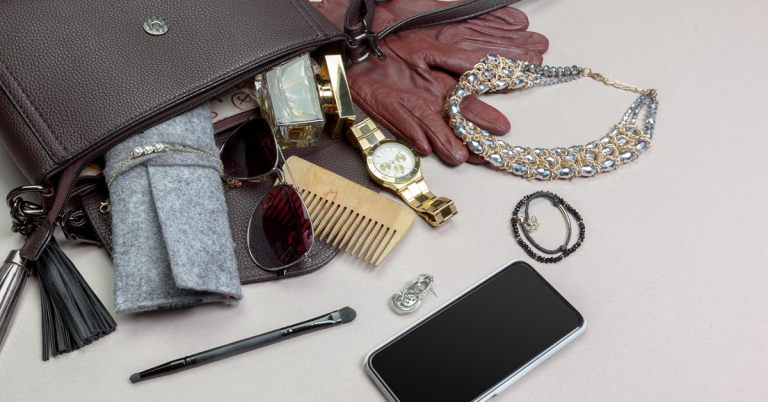Are Designer Dupes Still Taboo In 2025?

Taking a walk down that one particular street in Petaling Street is a great source of entertainment for me. From seeing sliders with the logo “Mike – Just Don’t”, or perhaps a shirt from “Ain’t Laurent”, or even a bag from “Her Mess”, Petaling Street is notoriously known for selling fake branded goods.
It is undeniable that there have been consistent efforts by the Domestic Trade Ministry and Cost of Living Ministry (KPDN), with RM360,000 worth of counterfeit items being seized in February, but there still seems to be a sizeable number of counterfeit booths along the street.
While we do disagree with the selling of counterfeit items because it violates the copyright and/or trademark rights of the designer brand, what if there were a much cheaper alternative to designer brands that does not violate copyrights?
I present to you, the dupes
Dupes are basically a loophole that higher-end brands do not want you to discover. Why? Because they look exactly like the designer’s original but do not pretend to be it. You won’t find fake logos or smartly twisted brand slogans on it. But, the stitching, the silhouette and the colour choice is bound to give the same aesthetic or luxury touch, without the markup. That’s exactly why luxury brands are sweating!
Think about it! Dupes offer the same on-trend look for a fraction of the price, but it messes with the illusion. Suddenly, it’s not all about chasing exclusivity, but rather the cheaper choice that drives the same impact.
Don’t go chasing branded goods~
Consumers are more evolved. Exclusivity and personalisation, while it does still hold some power in influencing consumers to purchase the item, just don’t quite have the same ring to it anymore. Wearing brand names from top to bottom used to be a way to show you made it. But now, it’s considered “cringeworthy” or “try-hard” – two very negative connotations.
That’s where we’re seeing the birth of “quiet luxury”. Brands are now making products with less obvious logos on them, which further drives consumers to look for dupes instead. Now, consumers are all about showing off their Amazon Bottega dupes, or rocking the Charles and Keith’s take on the iconic Chanel 22. While it is largely predominant in the fashion industry, we are also seeing more dupes for higher-end brand makeup products. Famous makeup dupe? L’Oreal and Maybelline.
Read our article on “Can you fake being old money?” here!
Rather than the focus being on the brand of the fashion item, more focus is placed on the way the items are being styled. Designer dupes let consumers have the same aesthetic without the five-figure dent in the bank account. I mean, let’s face it, we’re not all born with a gold spoon, we try our best to make do with what we have, right?
Read more about how you can save money better with these 10 financial tips!
Influencers on their best dupe game
Don’t get me wrong, there are still a fair number of influencers who are able to afford the luxury brands and build the most amazing outfits with them. But, there’s also been a rise in the number of influencers who are proudly sharing their dupe finds and are even making content online comparing designer originals to dupe counterparts.
They’ll be making TikTok and Instagram videos about their RM39 Shopee Miu Miu flats and invite their followers to do the same by including the link to the product. This transparency has made fashion way more accessible and less elitist.
Are dupes even legal? Actually~
Yes! Unlike counterfeit items with copied logos and branding, dupes merely take inspiration from high-end brands without violating trademarks. They identify popular silhouettes and aesthetics, and make it somewhat similar to them. It’s really a grey area, but not exactly crossing into the criminal zone.
Furthermore, by indicating clearly that the item is “designer-inspired”, it takes away any foul play since consumers are made aware of it!
But it just doesn’t sit quite right with me
Well, you’re not alone. Plenty of people find dupes unethical because they still copy the original work of the designers and take away the effort the team put in. That’s fair.
But, we live in a very “woke” world. Copying from a luxury mega-brand that makes millions of dollars each year – fair game. Copying from a local brand that sells a handmade tote bag at RM250 – not cool.
Ultimately, the point of dupes is to increase accessibility to trendy items. With many of us struggling with the rising living costs, now more than ever, there’s a need to find ways to serve luxury looks on a budget.
Not a taboo, but rather a lifestyle choice
With that, I don’t think designer dupes are taboo, but rather a lifestyle. It’s not about faking it till you make it, but about expressing your unique style without having to go broke. And in a world where first impressions are based on what you wear, fashion should empower, not exclude.
Wear that dupe, and be proud!









